Report Prada group 31 - AFC project PDF

| Title | Report Prada group 31 - AFC project |
|---|---|
| Author | chiara Costantini |
| Course | Ingegneria gestionale |
| Institution | Politecnico di Milano |
| Pages | 15 |
| File Size | 684.4 KB |
| File Type | |
| Total Downloads | 49 |
| Total Views | 156 |
Summary
AFC project...
Description
ACCOUNTING, FINANCE, AND CONTROL A.Y. 2016-2017
GROUP 31 Michele Italo D'Amato
872703
Edoardo Di Pierro
878843
Umberto De Patre
863152
Rajat Kottieth Korambeth
875612
Sreenath Kochumadom Venugopal
875623
COMPANY PROFILE Prada SpA, listing 20% of its shares on the Hong Kong Stock Exchange (1913.HK), is a subsidiary of Prada Holding SpA. The PRADA Group is one of the top global players in the luxury fashion industry, designing, producing, and distributing leather goods, handbags, footwear, apparel, and accessories in Europe, the Asia Pacific, the Americas, Japan, the Middle East, and internationally. It offers its products under the Prada, MiuMiu, Church’s, and Car Shoe brands. The company also provides eyewear and fragrances under licensing agreements. Prada’s products are made in thirteen company-owned sites, eleven of which are located in Italy, one in United Kingdom, one in France, and by a network of external contractors. The Group’s distribution network extends across 70 countries, counting 622 directly operated stores (at July 31 2016) and a selection of department stores and multi-brand retail spaces. In addition, it engages in art exhibitions (Prada Foundation), patisserie (Pasticceria Marchesi), and America’s Cup sponsorship campaigns (Luna Rossa team). Prada group has:
Average number of employee: 12,4 mln people, 4% more than the year before About 3,5bn of net revenues
Value of total assets 4,7 bn
THE MARKET The global apparel market is valued at 3,000 billion dollars, and accounts for 2% of the world's gross domestic product (GDP). The womenswear industry is valued at 621 billion dollars while the menswear industry is valued at 402 billion dollars. Childrenswear had a global retail value of 186 billion dollars. The retail value of the luxury goods market is 339.4 billion dollars. Sports footwear is valued at 90.4 billion dollars and even the bridal wear industry is valued at 57 billion dollars. Apart from these significant figures, the market also provides lot of employment opportunities to the people as well. The number of people employed in the apparel manufacturing industry has gone up by 91% from 2000 until 2016, which is approximately 25 million people. In addition, the number of people employed in the textiles & clothing industry has changed from 26.5 million in 2000 to 57.8 million approximately, which shows an increase of almost 118%.
COMPETITIVE ANALYSIS PORTER’S FIVE COMPETITIVE FORCES Porter's five forces analysis is a framework that attempts to analyze the level of competition within an industry, supporting the business strategy development. The five forces are fixed, but the intensity of the impact of these forces are different for each organization.
2
BARGAINING POWER OF CUSTOMERS: Low/Moderate • Low sensitivity to price changes • Dependece on few and loyal customers
COMPETITIVE RIVALRY: High/Moderate
BARGAINING POWER OF SUPPLIERS: Moderate • Few high-quality suppliers • Low relevance of the purchasing price
• Fast-changing trends • High market concentration • Low switching costs
THREAT OF NEW ENTRANTS: Low • High brand loyalty • High brand awareness • High start-up costs
THREAT OF SUBSTITUTE PRODUCTS: Moderate • Products with better value for money (fast fashion) • Imitations • Recognized product quality
1. COMPETITIVE RIVALRY The level of competition is high for Prada: as the market has a very high level of concentration, retaining and enhancing the brand image through innovation are key activities to stay ahead of the competition. Market rules change continually and Prada should adapt accordingly anticipating them. In fact, although most Prada customers are loyal to the brand, the low switching costs make very easy to lose or gain buyers increasing the level of competition among high-end luxury brands even further. 2. BARGAINING POWER OF CUSTOMERS The strength of the brand image and its rich history allows Prada to stay strong against the customers bargaining power, allowing them a very low margin for bargaining. Moreover, since its customers are few but wealthy and loyal, and in this industry the price acts as a symbol of exclusivity, both the organization and the customer are not too concerned about reducing the prices of the products. 3. BARGAINING POWER OF SUPPLIERS Since Prada prefers only the highest quality of raw materials, there is a strict selection of suppliers and hence they have less power for setting their own price. However, profits for the suppliers are still quite high due to the procurement of a huge lot size for Prada, partially balancing the situation.
3
4. THREAT OF NEW ENTRANTS In this industry is all about the brand: the history of Prada combined with the preserving of an excellent quality over all these years have kept the customers happy and loyal. Although in the digital era startups are disrupting entire industries, the high-end luxury is very traditionally rooted into consumers’ perception and it is thus very difficult for a new firm to replicate that sense of exclusivity. Moreover, economies of scale and high quality standards make this process even more difficult. 5. THREAT OF SUBSTITUTES The new focus towards fast fashion has pulled down the classic luxury fashion commodities, as the mindset of customers has inclined a little. Another factor pushing the customers is the price difference between the former and latter, the latter being highly priced. Counterfeits have now became a daily scenario for every product, and this is the case for Prada too. Many local companies have adopted names similar to highly reputed companies, and may even replicate the trademark symbol, trying to cheat the customers. However, these counterfeits are not able to replicate the design completely nor will they ever match the original products’ quality. SWOT ANALYSIS
STRENGHTS
WEAKNESSES
- Prada history and strong brand identity
- Low digitalization
- Strong presence at a worldwide level - Recognized high quality and luxury products
- Profit is increasing at a lower rate than competitors' average
- Solid corporate structure
- Elevated fixed costs
- High price margin
- High debt amount
OPPORTUNITIES
THREATS
- Diffusion in emerging markets
- Presence of substitutes
- Improve digitalization
- Increasing power detained by online retailer
- Be more innovative than competitors
- Customers brand switching risk
- Strategic partnerships
- Strong competition - Counterfeit and fake products
The SWOT analysis is a structured planning method that evaluates 4 elements of a project or business venture: Strengths, Weaknesses, Opportunities and Threats. Prada, a major player in the luxury fashion segment worldwide, is following the basic SWOT Analysis for creating the strategic marketing plan for the company’s overall growth. Prada SPA, founded in 1913, has a worldwide exposure to the market from the earliest products, and its rich history has provided an irreplaceable identity for the brand. The
4
emphasis on the quality and durability of the offered luxury products has been imprinted on the customers’ minds. The corporate structure of the company has provided a strong asset, and a great brand image in this industry has helped them obtaining high margin on price. Limited investments on the digitalization, adopted by the competitive players, has certainly put Prada on the back foot. No action has been taken to reduce the fixed cost of the company, and hence the profit margin has had a low increase rate in the near present. Apart from that, the company has been the recipient for a huge amount of debts, and hence it is directly influencing the company’s value in the market. Even though it is weak in the above-mentioned areas, Prada can improve its position in the market by adopting some measures. Prada could invest more in the emerging markets like the BRICS or it could improve its role in the now digital world. A partnership with some other major players in the same or another market segment could be a good option, but it should not affect the brand image that Prada possesses now. The best policy they could accept is to improve the technology used and be more innovative and advanced that their competitors, which might incur high investment costs but could provide a long-term success. The environmental analysis portrays some of the threats that this fashion leader is facing right now. As mentioned previously, the competitors’ advantages are high and a trademark brand like Prada has very strong competition from the other players in the same segment. Another relevant issue is the threat of new substitutes in the market, providing the same quality product at a lower price, and the fake or counterfeit products entering the market every day. The channel for these counterfeit products is the digital channel which is the internet, and that too has provided a threat to Prada.
PRELIMINARY ANALYSIS To understand the events with major impact on Prada financial statements, we studied in deep the 2015 annual report, also considering the main facts of the previous years to provide an overall picture.
MERGERS AND ACQUISITIONS On April 22, 2015, Montenapoleone 9 srl was incorporated by PRADA spa and Marchesi Angelo srl, in order to develop the commercial business of the Marchesi brand. To develop its international commercial activities, PRADA spa incorporated PRADA Denmark, PRADA Finnish Oy, andPRADA Belgium SPRL. During the year, Car Shoe UK Ltd and Car Shoe Hong Kong Ltd were liquidated. PRADA spa acquired the remaining 40% of the quota capital of Pellettierid’Italia srl, which was completely incorporated into Prada spa on November 24, 2015.
5
INVESTMENTS Prada has largely invested in improving its distribution network coverage over the last three years: in 2015, the number of Directly Operated Stores (DOS) increased from 594 to 618. This led to an increase in both inventories (+54% compared to January 2014) and fixed assets (+23% compared to January 2014). In particular, the increase in finished products related to a different replenishment approach (started in the last months of 2014), as well as to the lower than expected volume of sales. Towards the end of the year, Prada launched the Digital Retail project, aiming at increasing the customer involvement through direct and personalized interactions.
LOANS During 2015, in order to increase its financial flexibility while taking advantage of favorable conditions available on the credit market, the Group arranged new medium/long-term bank loan totaling around € 320 million and repaid debt of around € 45 million as it fell due (As a result, total bank borrowing increased by 275 million).
RATIO ANALYSIS The ratio analysis is a technique aimed at converting the information provided by company’s financial statements into ratios for comparisons, with past data (trend analysis) and among competitors (inter-firm analysis). For Prada, we firstly executed the trend analysis valuating the last six years’ performance (Jan 2016-2011) under both economic and cash dimensions. Eventually, we concluded with the inter-firm analysis relative to the most recent financial data (2015).
PROFITABILITY ANALYSIS This section’s goal is to check whether the company is able to generate profit and return for shareholders. To conduct a good profitability analysis, we considered four different levels. LEVEL 1 At this level, the most representative performance indicator of a company is ROE, however, net profit margin and payout ratio have also been computed to deliver a more comprehensive financial view. Data in all the tables are in thousands of €.
ROE=NetProfit/Equity 01/2016 01/2015 01/2014 01/2013 01/2012 01/2011 ROE 10.68% 14.93% 23.24% 26.85% 23.59% 20.73% Net Profit 330,888 450,730 627,785 625,681 431,929 250,819 Shareholders' Equity 3,097,377 3,018,147 2,701,540 2,330,492 1,830,967 1,210,138 It is evident that, after an initial steady growth lasting until 2013, Prada’s ROE has experienced a noticeable fall over the last three years (compared to 2013 there is a reduction of 60.22%).
6
Considering the last year, this drop occurred because Prada’s strategy to expand its retail network led to an increase in operating and advertising expenses without a corresponding sales growth. The trend of ROE is displayed in the following graph.
ROE trend 26.85% 20.73%
23.59%
30% 25% 20%
23.24% 14.93% 10.68%
01/2011
NPM=NetProfit/Revenue NET PROFIT MARGIN Net Profit Revenues PR=Dividends/NetProfit PAYOUT RATIO Dividends Net Profit
01/2012
01/2013
01/2016 9.33% 330,888 3,547,771 01/2016 86.04% 284,700 330,888
01/2014
01/2015
15% 10% 5%
01/2016
01/2015 01/2014 01/2013 01/2012 01/2011 12.69% 17.50% 18.98% 16.90% 12.26% 450,730 627,785 625,681 431,929 250,819 3,551,696 3,587,347 3,297,219 2,555,606 2,046,651 01/2015 01/2014 01/2013 01/2012 01/2011 64.53% 37.74% 21.34% 1.47% 23.68% 290,849 236,928 133,517 6,368 59,382 450,730 627,785 625,681 431,929 250,819
As expected, the Net Profit Margin retraces the ROE trend; instead, the Payout Ratio has increased his value during the years. Only in the 2012, the PR dropped due to the decision of the company to postpone the payment of dividends, in order to use that cash itself. LEVEL 2 At level 2, the ROE is decomposed into an operating, financial, tax, and discontinued operations dimensions.
Second Level Net Profit E=Equity EBIT Total Assets Net Fin. Interests & Incomes D=Total Liabilities EBT ROI=ROA=EBIT/TotAssets r=NetFinInter&Inc/TotLiab Leverage Ratio=D/E s=d*t=NetProfit/EBT ROE=[ROI+D/E*(ROI-r)]*s
01/2016 330,888 3,097,377 502,893 4,756,555 (27,561) 1,659,178 475,332 10.57% 1.66% 53.57% 69.61% 10.68%
01/2015 01/2014 01/2013 01/2012 01/2011 450,730 627,785 625,681 431,929 250,819 3,018,147 2,701,540 2,330,492 1,830,967 1,210,138 701,551 939,237 889,781 628,935 418,387 4,738,877 3,888,292 3,385,279 2,943,568 2,366,015 (33,849) (16,341) (6,165) (26,027) (30,158) 1,720,730 1,186,752 1,054,787 1,112,601 1,155,877 667,702 922,896 883,616 602,908 388,229 14.80% 24.16% 26.28% 21.37% 17.68% 1.97% 1.38% 0.58% 2.34% 2.61% 57.01% 43.93% 45.26% 60.77% 95.52% 67.50% 68.02% 70.81% 71.64% 64.61% 14.93% 23.24% 26.85% 23.59% 20.73%
7
The ROI follows the ROE trend, which might suggest Prada to reduce the value of total assets (or to improve their employment) in order to increase its ROI. As we can see from the table, the value of assets increased over time while the EBIT returned to the value of 2011. For this reason, Prada could disinvest to increase the indicator in the short-term (e.g., by eliminating redundant and useless assets), or it might try to increase the EBIT back to the level of 2014. About the leverage ratio we can say that during the last 6 years the value is stable under the value of 1, thus the value of debts is always minor than equity. Moreover, since the return on investment (ROI) is always greater than the average cost of debt (r), we can argue that although Prada benefits from the leverage effects in order to increase the ROE, it exploits that effect only partially since the ratio is always minor than 1. LEVEL 3
Third Level 01/2016 EBIT 502,893 Sales 3,504,344 Total Assets 4,756,555 ROS=EBIT/Sales 14.35% Asset Turnover=Sales/Assets 73.67%
01/2015 01/2014 01/2013 01/2012 01/2011 701,551 939,237 889,781 628,935 418,387 3,513,436 3,548,207 3,256,428 2,523,330 2,017,064 4,738,877 3,888,292 3,385,279 2,943,568 2,366,015 19.97% 26.47% 27.32% 24.92% 20.74% 74.14% 91.25% 96.19% 85.72% 85.25%
The table shows that the ROS follows the ROE trend too, since the recent decrease is caused by investments in directly operated stores (DOS) without an equivalent increase in sales. The Asset Turnover dropping by 19% between January 2014 and 2015 displays it even better. LEVEL 4
Fourth Level - ROS Analysis Raw Materials Costs % Raw Materials/Sales Labour Costs % Labour/Sales Depreciation % Depreciation/Sales
01/2016 858,481 24.50% 58,533 1.67% 299,865 8.56%
01/2015 971,527 27.65% 60,332 1.72% 299,865 8.53%
01/2014 848,675 23.92% 57,817 1.63% 203,949 5.75%
01/2013 731,805 22.47% 52,018 1.60% 162,688 5.00%
01/2012 663,587 26.30% 44,550 1.77% 130,317 5.16%
01/2011 589,232 29.21% 32,768 1.62% 117,543 5.83%
The most relevant ROS component, which reflects the increase in DOS without a corresponding sales increase, is the percentage of Depreciation on Sales that suffered from a shift of +33% between January 2014 and 2015, remaining constant over the last year.
Fourth Level - AT Analysis 01/2016 Property, plant and equipment 1,517,779 Fixed asset turnover 2.31 Total Inventories 692,672 Inventory turnover 5.06
01/2015 01/2014 1,474,218 1,230,192 2.38 2.88 654,545 449,903 5.37 7.89
01/2013 857,299 3.80 343,802 9.47
01/2012 713,870 3.53 374,782 6.73
01/2011 536,717 3.76 280,409 7.19
As just discussed, the Fixed Asset Turnover senses the same effect due to investments not fully repaid in terms of increased sales. The Inventory Turnover is decreasing since 01/2013, which
8
might reveal that Prada increased its production rate expecting a growth in sales after its investment in DOS; however, it has not happened.
LIQUIDITY ANALYSIS Liquidity Analysis 01/2016 Total current assets 1,888,438 Total current liabilities 791,819 Current ratio=CurAss/CurLiab 2.38 Total Inventories 692,672 Acid test=(CurAss-Inv)/CurLiab 1.51 CFFO 627,508 Total non-current liabilities 867,359 Cash flow adequacy 0.72 Long-term debt 520,475 Long-term debt coverage 0.83 Dividends 284,700 Dividend coverage 0.45
01/2015 01/2014 01/2013 01/2012 1,899,955 1,461,596 1,387,449 1,117,503 1,115,025 706,475 742,062 716,584 1.70 2.07 1.87 1.56 654,545 449,903 343,802 374,782 1.12 1.43 1.41 1.04 788,229 1,062,596 1,075,852 679,578 605,705 480,277 312,725 396,017 1.30 2.21 3.44 1.72 255,203 207,950 78,830 178,442 0.32 0.20 0.07 0.26 290,849 236,928 133,517 6,368 0.37 0.22 0.12 0.01
01/2011 770,025 659,166 1.17 280,409 0.74 480,690 496,711 0.97 303,408 0.63 59,382 0.12
The Current Ratio and the Acid Test do not reveal major problems in terms of cash availability, in fact, they present a growing trend since 01/2011.
INTER-FIRM ANALYSIS Competitors Analysis Net profit Equity EBIT Total asset Total liabilities Financial income Financial cost EBT ROI r D/E s ROE
Prada LVMH Burberry Ferragamo 330,888 3,573,000 314,600 174,450 3,097,377 25,799,000 1,620,900 608,741 502,893 6,384,000 402,900 264,600 4,756,555 57,601,000 2,314,300 1,123,821 1,659,178 31,802,000 693,400 515,080 9,348 166,000 15,000 39,735 36,909 580,000 2,300 52,952 475,332 5,970,000 415,600 251,383 10.57% 11.08% 18.06%* 23.54% 1.66% 1.30% 0.33%* 2.57% 53.57% 123.27% 42.78% 84.61% 69.61% 59.85% 75.70% 69.40% 10.68% 13.85% 19.41%* 28.66%
The luxury industry is divided into soft and hard luxury. Soft luxury industry deals with clothing, apparel and accessories, while the hard luxury sector deals with jewelry and watches. The analysis on Prada’s competitors is carried out considering Prada’s interests in the soft luxury industry comprising of: LVMH, Gucci, Hermes, Coach, Prada, Burberry and Salvatore Ferragamo. In particular, we focused on the leader of the market LVMH, one similar to Prada like Burb...
Similar Free PDFs

Report Prada group 31 - AFC project
- 15 Pages

AFC 2019 Group 2 Luxottica
- 20 Pages

Iris Group Research Project Report
- 43 Pages

Report CSC 186 Group Project
- 14 Pages

AFC RRHH - afc
- 25 Pages

final group project report-4G (1).pdf
- 105 Pages
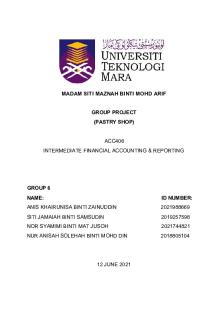
Group Project Account ( Group 6)
- 21 Pages

Group Report
- 26 Pages

Group Report on Partex Group
- 29 Pages
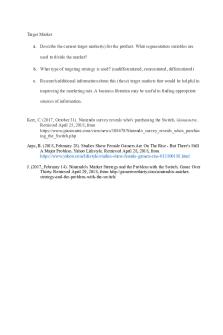
Group Project- Target Market
- 4 Pages
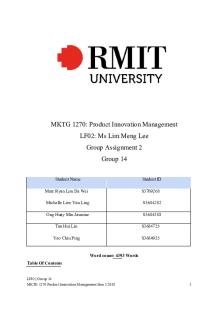
PIM Group Project 2
- 68 Pages
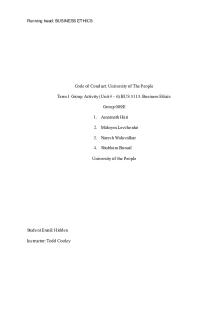
Group Project 009E Final
- 21 Pages
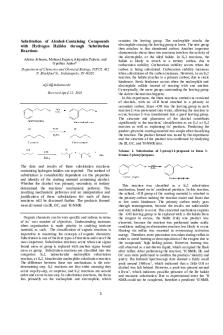
Group Project JOC Note
- 4 Pages

Group Project Proposal
- 1 Pages
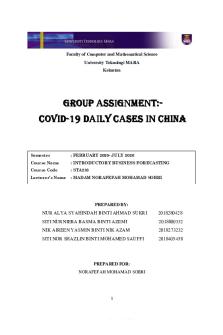
Group Project STA 233
- 33 Pages
Popular Institutions
- Tinajero National High School - Annex
- Politeknik Caltex Riau
- Yokohama City University
- SGT University
- University of Al-Qadisiyah
- Divine Word College of Vigan
- Techniek College Rotterdam
- Universidade de Santiago
- Universiti Teknologi MARA Cawangan Johor Kampus Pasir Gudang
- Poltekkes Kemenkes Yogyakarta
- Baguio City National High School
- Colegio san marcos
- preparatoria uno
- Centro de Bachillerato Tecnológico Industrial y de Servicios No. 107
- Dalian Maritime University
- Quang Trung Secondary School
- Colegio Tecnológico en Informática
- Corporación Regional de Educación Superior
- Grupo CEDVA
- Dar Al Uloom University
- Centro de Estudios Preuniversitarios de la Universidad Nacional de Ingeniería
- 上智大学
- Aakash International School, Nuna Majara
- San Felipe Neri Catholic School
- Kang Chiao International School - New Taipei City
- Misamis Occidental National High School
- Institución Educativa Escuela Normal Juan Ladrilleros
- Kolehiyo ng Pantukan
- Batanes State College
- Instituto Continental
- Sekolah Menengah Kejuruan Kesehatan Kaltara (Tarakan)
- Colegio de La Inmaculada Concepcion - Cebu
